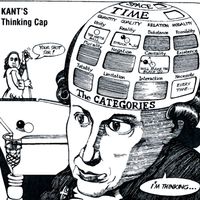'What is this "I" I call myself?' New research on the role of the ventral medial prefrontal cortex in personal identity
Leonard Shelby had it bad. Really bad. In the 2000 noir thriller, Memento, Leonard (played by Guy Pearce) suffers from anterograde amnesia – he can’t form new memories. Having apparently been clocked on the head, Leonard is unable to stitch together his life prior the injury and everything that happened afterward. Worse yet, perhaps, Leonard can’t connect himself to his future the way you and I do ours when, for example, we think about reorganizing our day in light of some schedule change.
In an important sense, Leonard is stuck in a continual present, whose only reference is a bank of memories that have long-since passed. For example, Leonard remembers being an insurance investigator, but doesn’t have any sense of when, since everything that happened after his injury is continually erased.*
So, can an extreme case of anterograde amnesia tell us anything about personal identity – about what “I” am or believe myself to be? According to “Present and future self in memory: the role of vmPFC in the self-reference effect,” a new study in Social Cognitive and Affective Neuroscience, a specific brain region is responsible for the sort of stitching that Leonard lacks. The ventral medial prefrontal cortex (vmPFC) appears to structure one’s “self.”
Consider the difference between thinking about an event unrelated to one in which you were involved – say, the date Abraham Lincoln signed the Emancipation Proclamation. Now consider an event in which you were involved. Researchers have established that the brain deals with the former differently from the latter – self-referential memory encoding – such that self-referential memory is easier to recall than other types of memory.
By drilling down on what psychologists call “self-referential effect” (SRE) – the ease with which memories involving oneself – scientists distinguished functions of the medial prefrontal cortex (mPF), which is responsible for self-thoughts. The mPF has two regions, the upper or dorsal, and the lower or ventral. Each appears to contribute to self-thought in specific ways. For example, among the functions of the dorsalmedial prefrtonal cortex (dmPFC) seems to be distinguishing oneself from another.
In the new study, researchers, Debora Stendardi, Francesca Biscotto, Elena Bertossi, and Elisa Ciaramelli set out “to confirm that the vmPFC is a crucial substrate of self-knowledge, showing that vmPFC damage is associated with a reduced SRE.” They studied a group of patients with brain damage and a group without brain damage. Those with damaged vmPFC were distinctly unsuccessful in generating self-related information, which suggests the crucial role the vmPFC plays in forming and maintaining personal identity.
Remember Leonard Shelby? He had so much trouble with short-term memory that even his sense of who he wasbecomes muddled. This new research helps clarify where and how psychological continuity – that network of beliefs, attitudes, and memories so crucial to what we say “I” am – is generated and sustained (or not).
*There are structural features of the film that enhance understanding Leonard’s condition. I won’t mention them here, so as not to spoil the wonderful effect for those who haven’t yet seen it.
Sources: Social Cognitive and Affective Neuroscience, ScienceDirect









